The release of the free SHINE templates coincides with my today’s talk on ‘Elevate your research presentations!’ to postgraduates at Centre for Drug Research (CDR), Universiti Sains Malaysia (USM). Thank you Dr. Siti Rafidah for the kind invite–had a great session with all of you =)
A week earlier, I released free VIVA presentation templates that I gave to workshop participants in Awesome PhD Presentations! The presentation templates for PhD and Masters students; it’s handcrafted for a viva-voce presentation.
In this post, I share tips and takeaways on becoming a strategic and effective communicator for your science.
Though it’s not about the #endgame, it’s good to know how to raise your game (in research) 😉
Common habits of postgrad presenters
A scientist is expected to not only excel in publishing own work/research but also do well in communicating it to their peers and the public. Communicating research is a part of the training during your PhD and/or Masters.
But let’s face it… many have managed to successfully put their audience to sleep… only to wake up at the end of it and join others in applause. Oh dear…
In other words, let’s not bore your audience to death when you talk about your research. Rather than presenting a research progress that sounds like a report, make it exciting and thrilling. Like a detective story.
Create a pull. Imagine a destination to where you wish your audience to go to. Drop (scientific) clues and hints along the journey to the destination. Think: where’s my turning point(s)? Or my discovery? You may refer to earlier blog posts on how not to look boring and the secret sauce of an academic presentation.
In my recent talk at CDR, I highlighted 3 common habits of postgraduate presenters and how to overcome them.
One of the most common habits I’ve seen in almost every postgrad presentations (I’d been to) in my academic life is captured so well by Jorge Cham below in a PhD Comics cartoon:
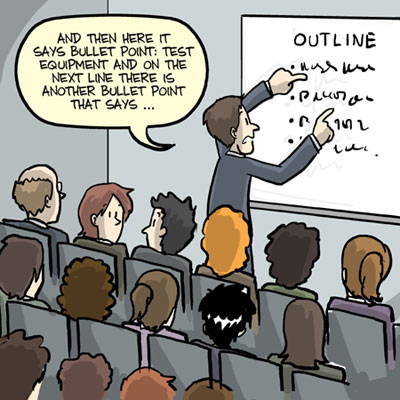
Cartoon by Jorge Cham.
A fatal attraction in a presentation?
Postgrad presenters and text seem to ‘magically’ have an attraction to each other… They tend to start by reading from the slides, continue facing and talking to the display throughout their presentations. Some love hiding behind a podium or a monitor, thus hardly have eye contact or establish rapport with the audience. This habit undermines the purpose of a research presentation.
First impressions matter–such habits also ‘alienate’ the very people you want to connect with and influence. The magic is lost… unfortunately…
And I often wonder if a high quantity of bullet points would amount to an impactful presentation?… Whether the amount of text on a slide deck corresponds to one’s diligence, depth of knowledge and years in research?…
Even when the audience may not have time to finish reading the first sentence on the slides because there are too ‘much’ text to read. Impactful? Effective? Think about it for a second…
The funny thing about life is when a thing is seen everywhere, somehow it becomes a part of life, a culture – no one seems too bothered about too many bullet points or too ‘much’ text. A ‘popular culture’ in higher education.
How to ‘unstuck’ a presenter from the text and bullet points on the slide?…
Behind each letter in ELEVATE
After highlighting the common habits of a postgrad presenter, I explained the rationale behind each letter in ‘Elevate’. Each corresponds to elements of an effective presentation:
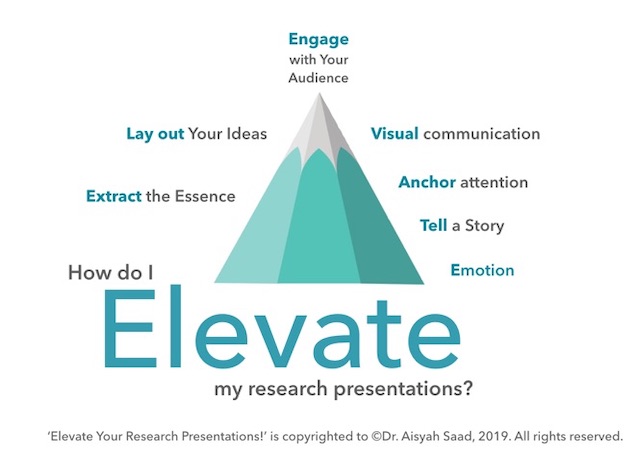
ELEVATE lets you and your message shine.
- E – Extract the essence
- L – Lay out your ideas
- E – Engage with Your Audience
- V – Visual communication
- A – Anchor attention
- T – Tell a story
- E – Emotion
You may wish to use the acronym ‘ELEVATE’ to help you in designing and delivering an engaging presentation in higher education – it’s a thought process/workflow when you start a new presentation.
And you’d soon find out that the ‘magic bullets’ in communicating your research with impact has little got to do with bullet points and lots of text.
One adage you may wish to adopt in an academic presentation is ‘Less is More’. Less text, more images. Less bullet points?…
That will add more power to your points.
Style over substance?…
Ultimately as a scientist and a researcher, we want to engage our audience during the presentation. To engage our audience with our science, we need to raise our game to a new level. Check out Nature’s post on Communication for Scientists here.
I share another element of presentation skills I learned this month at a recent PnP in USM. One that many scientists and researchers tend to overlook in wanting to communicate the facts or hard truths:
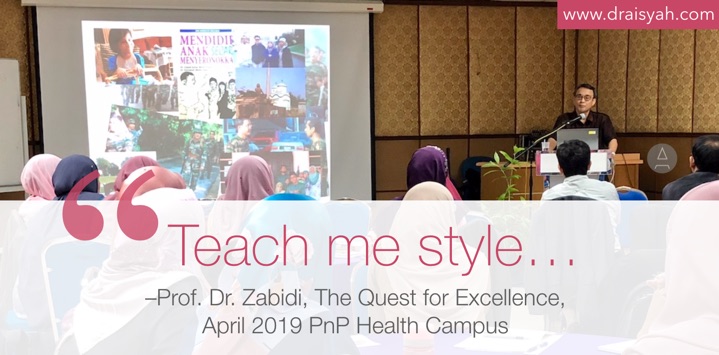
PnP programme at USM Health Campus organised by CDAE@USM, 7 April 2019.
Prof. Zabidi is Professor of Paediatrics and former Vice Chancellor of Perdana University. He stressed on the importance of style in communicating your science with patients, peers and superiors. Accordingly, he’s conducting an online class on style – contact Prof. Zabidi if you’re interested 😉
And style is not about being stylish. It’s about how you approach and handle a situation or a problem. It’s about being a strategic and effective communicator. Style could serve as a lubricant in interpersonal interactions, connecting you with others. Where a Venn diagram overlaps 😉
Style is another part of being a scientist that I think we need to develop–this is covered in my workshop. It takes time to develop your own style. The first step is the willingness to be honest with oneself. Be authentic.
Communicating substance (your science) with style would make a presentation effective and impactful to your audience–whether they are Professors, evaluators, examiners, peers, families or even your Opah (grandma).
A takeaway to young scientists: communicate your science concisely with confidence, clarity and style.
This is how you can stand above the rest.
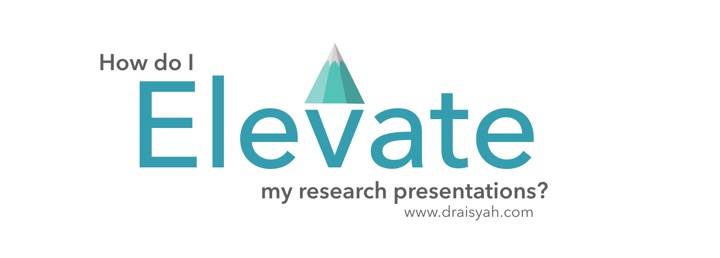
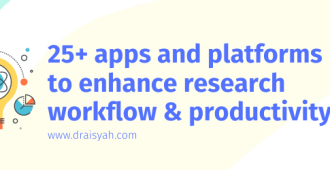


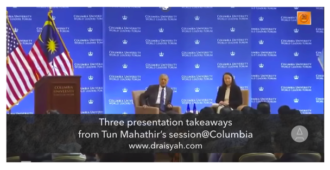

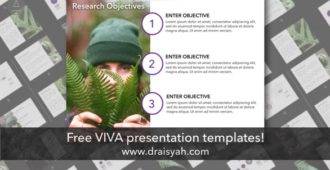
Comments are closed.